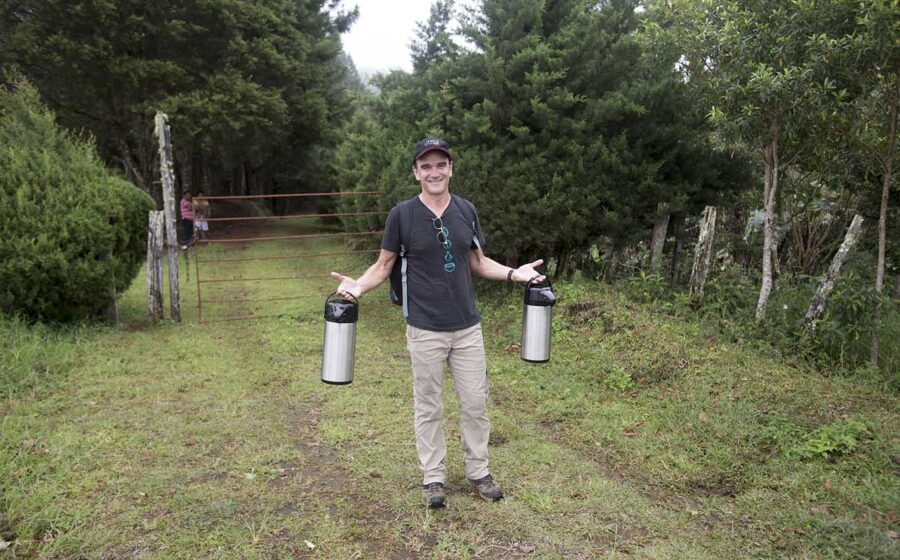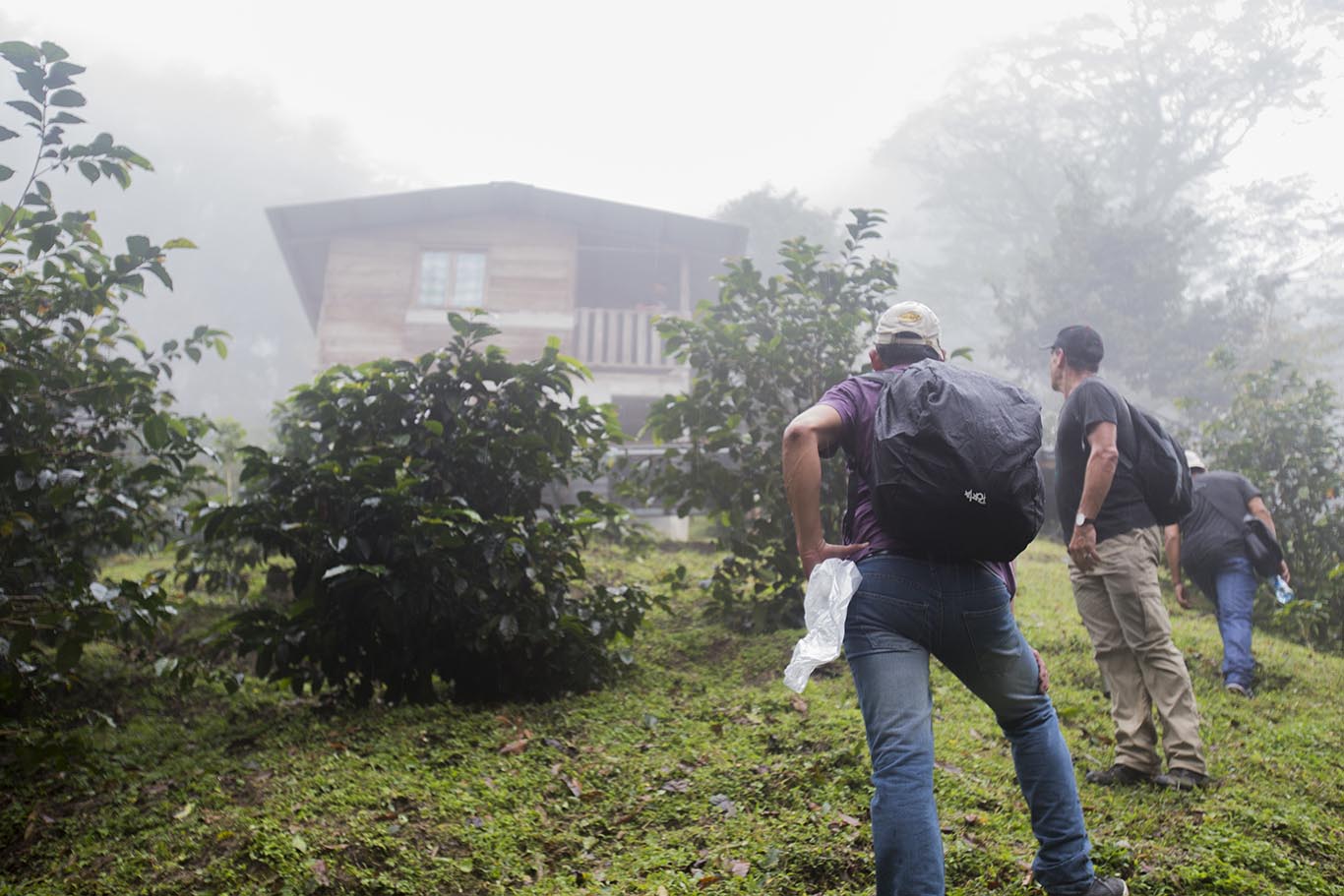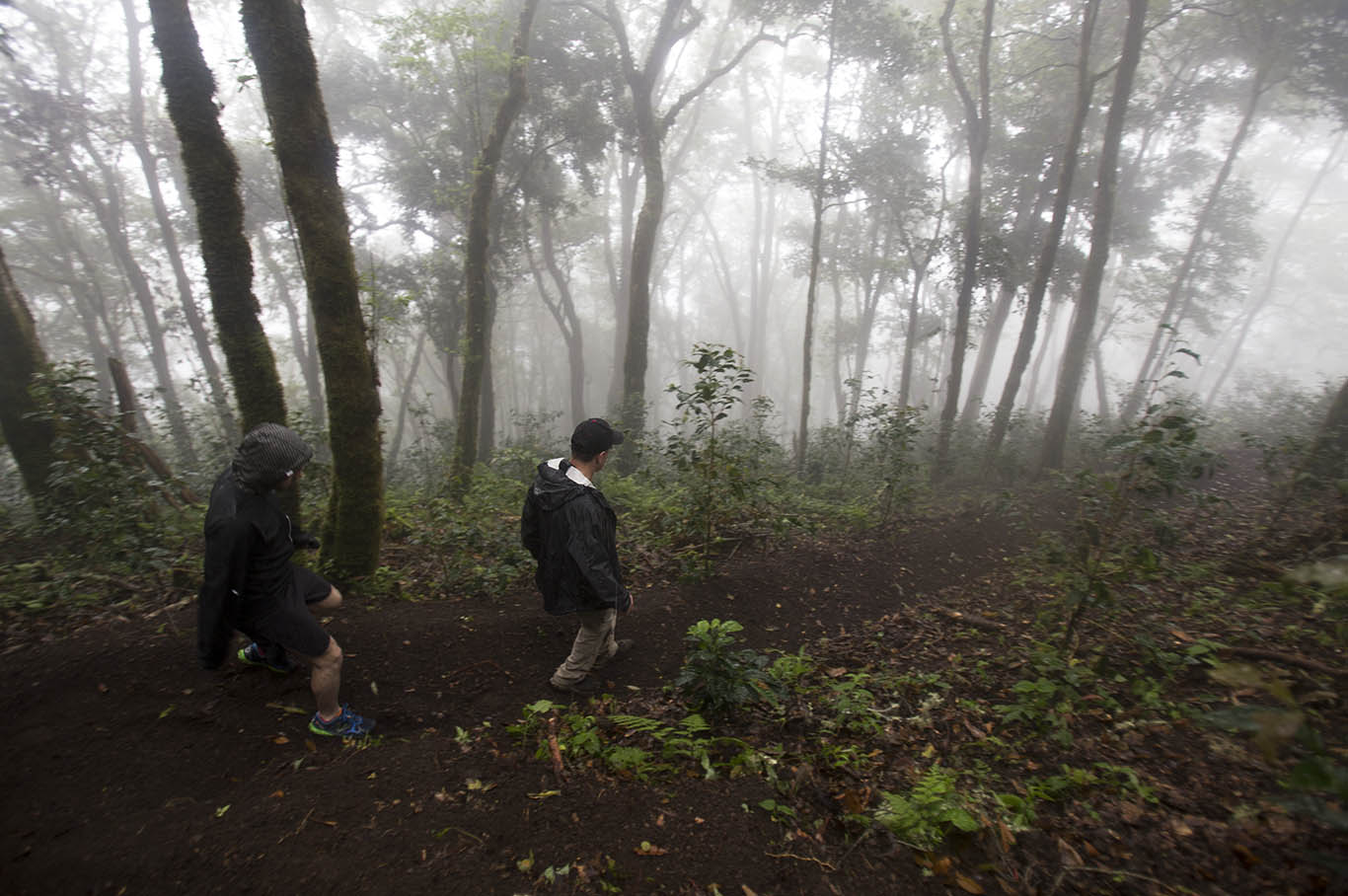[B]y the time our group of fifteen arrived at the farm workers’ house at the top of the hill it was hard to say who was more soaked: those who wore raincoats or those who didn’t. Even with a largely intact jungle canopy, the rain dumping down around Volcán Barú in eastern Panama had made the coatless slogging messes. The climb, including a last twenty-yard hands-pushing-on-knees thigh-burner, had turned raincoats into dripping saunas. Everyone except two Peruvian farmers and an American who runs 100-mile races was still sucking thin mountain air as Willem Boot, the farm’s owner, began his lecture about Finca la Mula.
We’d listened to Boot talk about his farm two days earlier at the conference portion of Let’s Talk Coffee in Panama City. He was on a panel of farmers who grew geisha, the half-wild coffee varietal that tastes unlike anything grown outside of Ethiopia and can fetch more than $100 per pound of green coffee. Geisha has a way of driving people mad, and Boot’s had it bad since 2004 when he first tasted the beans. (He’s certainly wasn’t a coffee novice; this is a man who’s dad was in coffee). He’s been a geisha obsessive ever since, buying the land for Finca la Mula in 2007 and partnering in a long-term project to cultivate wild coffee he’s helped harvest from the Ethiopian forests where geisha came from. This year, one lot of Finca la Mula’s harvest, only its second, won the Best of Panama competition and sold for $107 a pound.
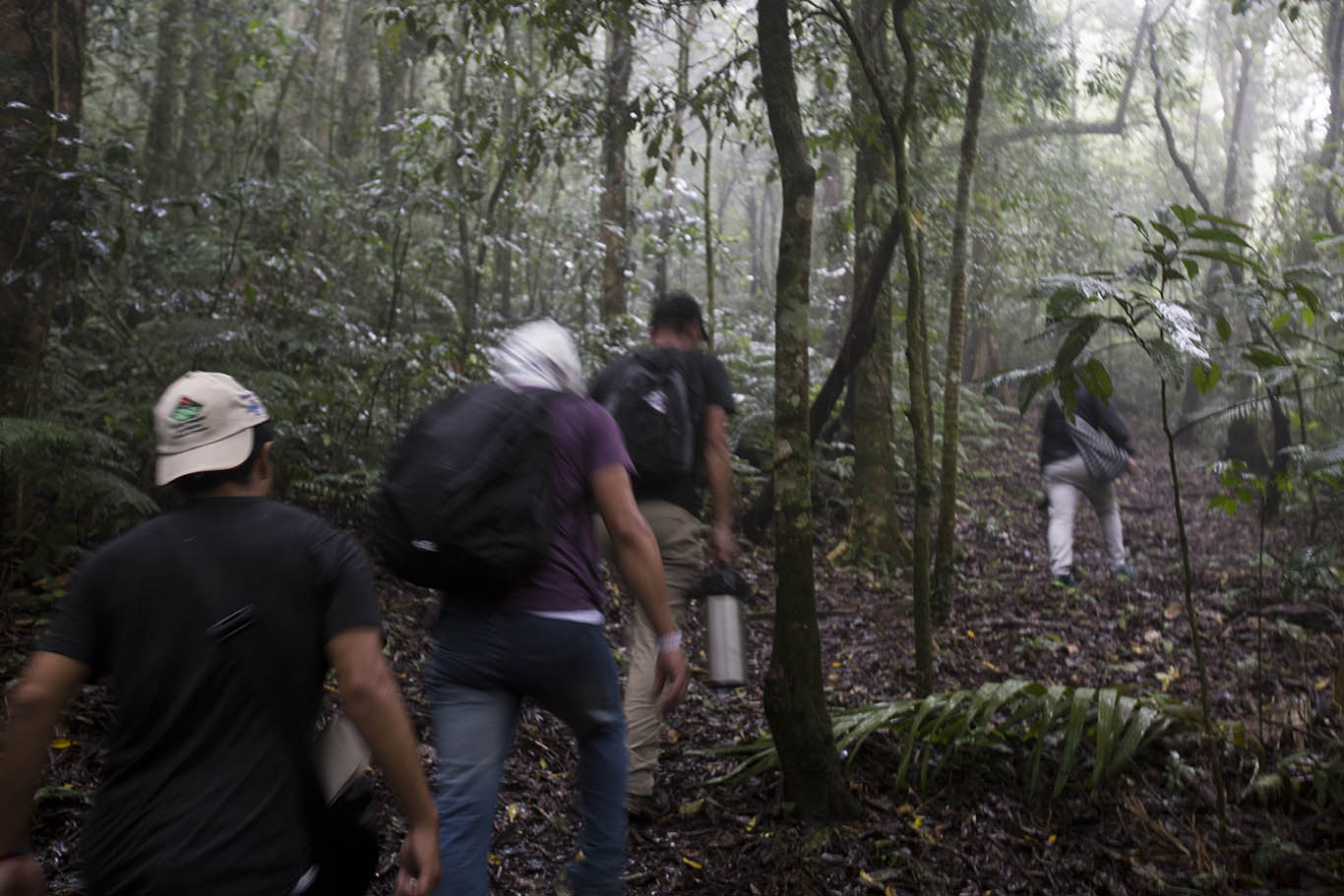

For the next two days of the conference I listened to incredible lectures, drank stunning coffees, and had long conversations with some of coffee’s smartest minds, but it was all in the confines of a resort hotel. I just wanted to get up the mountain to Boot’s Farm. After an overnight, not-sure-all-the-wheels-stayed-on-the-ground bus ride, a short bus ride, and then a four-wheel-drive bus ride that was cut short by a muddy road, we made our hike.
Now we were here, catching our breath under the tin roof of a house whose every single plank and pound of concrete had been hauled by men, women, and mules up the mountain. We could see almost none of the farm. Boot would give part of his extemporized lecture in English, translate for himself into Spanish, and then gesture toward the hillside not forty yards away but all that was there was mist and the shadows of tree trunks. Out there, up and down the hill, was twelve acres (five hectares) of geisha in its green, unripe stage.

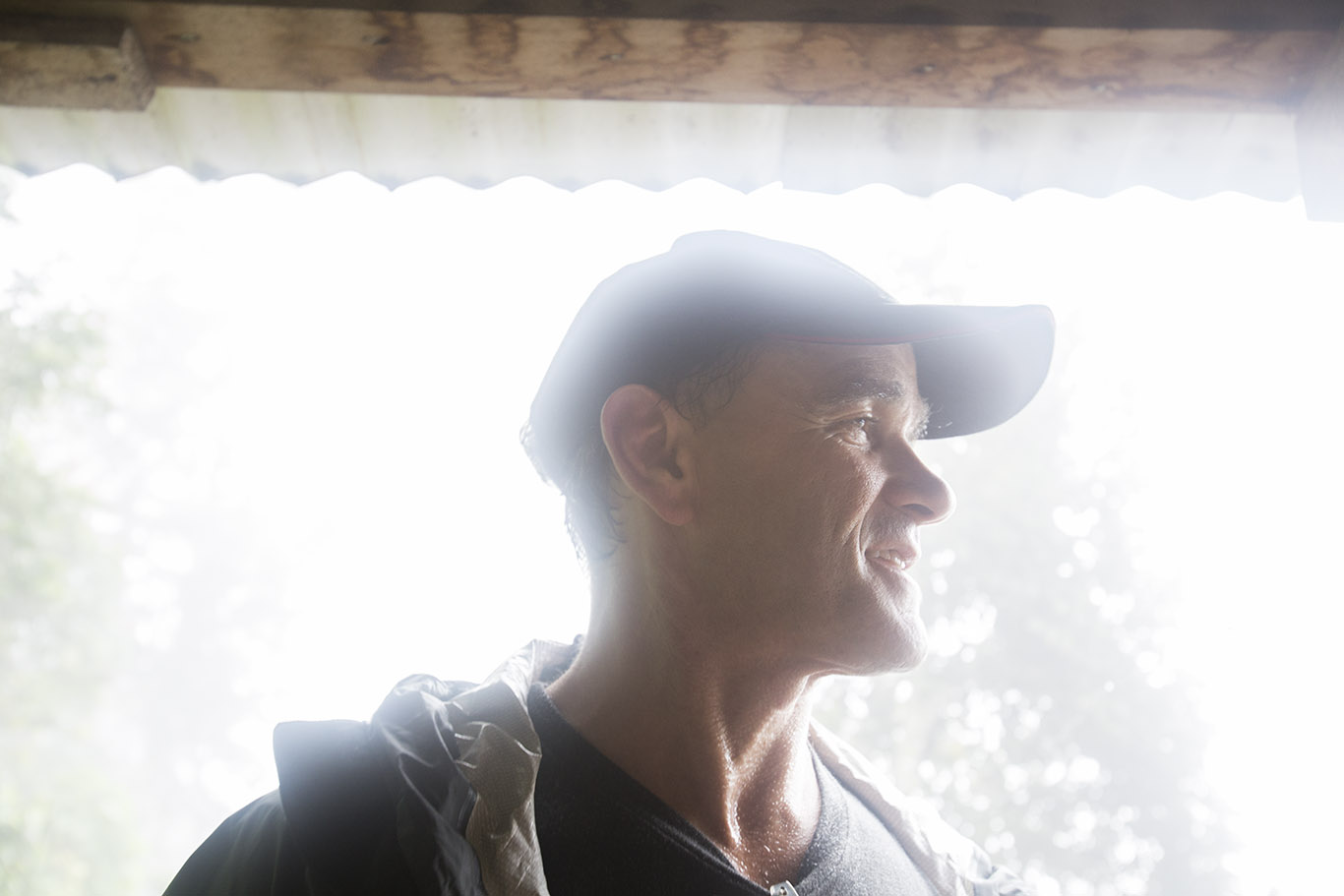
As he talked about the farm we pumped his coffee out of airpots he had carried up the hill. I had pilfered a ceramic cup from our hotel (which I returned) but everyone else drank the coffee from clear plastic cups that deformed from the heat of the coffee. Even so, geisha’s signature floral bouquet and tropical fruit finish—a combination that implausibly reminds me of spice-scented rice in Arab cuisine—all came through.
After his talk, Boot led us on a narrow trail covered in pillowy but slick volcanic soil that stitched an accordion course on the hill. Little of the canopy had been thinned and native plants grew amid the coffee trees. Geisha’s wildness means it’s a finicky, mutation-filled plant that often behaves as if it would rather die than be treated with anything less than exacting care. At least once, Boot nearly lost a huge portion of his plants. He says it will take between fifty and 100 years to domesticate geisha, though somehow I doubt Boot wants it fully civilized. As Aaron Davis from the Royal Botanic Garden says, any organism loses an untold and unintended number of qualities when it’s bred for specific traits. What could be worse than taming something whose wildness defines it?
When we think back on our favorite meals or drinks, that best-we-ever-had raspberry, most often it’s tied to a stunning or at least memorable context. Falafel outside the Dasmascus Gate in Jerusalem, cheese in Versailles, salmon in Celilo’s longhouse. Taste relies on the situation as much as flavor receptors on your tongue and neurons in your olfactory bulb. Willem Boot’s geisha amid the rain and the mud and the sweat at Finca la Mula: how will that ever lose its top spot?
—Cory Eldridge is Fresh Cup’s editor. This was his first farm visit. He tried to not geek out too hard.



